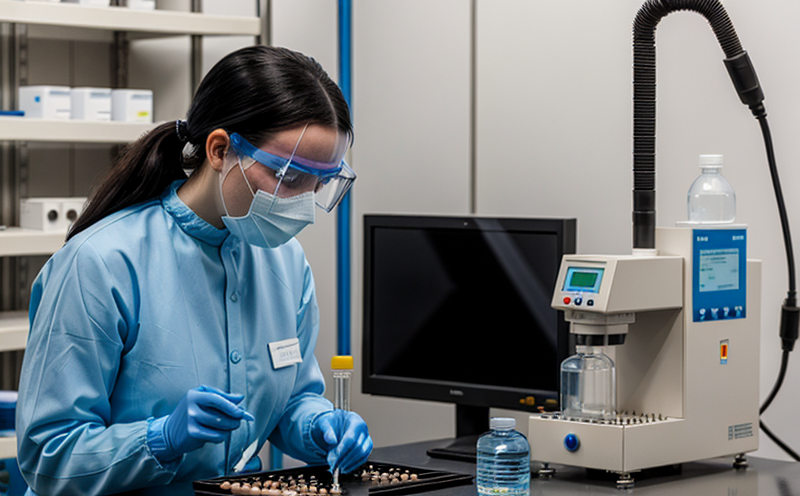Mutagenic Impurity Profiling Testing
Within the pharmaceutical industry, ensuring the safety and efficacy of medicinal products is paramount. One critical aspect of this endeavor involves identifying and characterizing impurities that could potentially be harmful to human health. Mutagenic impurities are a specific subset of these impurities that can cause genetic changes leading to diseases such as cancer. Identifying and quantifying mutagenic impurities early in the drug development process is essential to prevent risks downstream.
The pharmaceutical sector, governed by stringent regulatory frameworks like those from the FDA, EMA, and WHO, places a significant emphasis on quality assurance and safety. Mutagenicity testing falls under this umbrella, requiring accurate identification of potential mutagens present in both drug substances (DS) and finished dosage forms.
The testing methodology for mutagenic impurities involves several steps, including sample collection, extraction, purification, and ultimately analysis using advanced analytical techniques such as Ames tests or in vitro mammalian cell assays. These methods are designed to assess the ability of a compound to induce mutations in bacterial strains or mammalian cells.
Our laboratory employs state-of-the-art facilities and expertise to conduct mutagenic impurity profiling testing according to international standards, including ISO, ICH, and OECD guidelines. Our services cater specifically to quality managers, compliance officers, R&D engineers, and procurement teams responsible for ensuring the safety of pharmaceutical products.
The process begins with thorough sample preparation, ensuring that all relevant components are isolated and analyzed accurately. This step is crucial as it directly impacts the reliability of subsequent test results. After extraction and purification, samples undergo rigorous analysis using validated methods to determine their mutagenic potential.
Our team uses advanced technologies such as high-performance liquid chromatography (HPLC), gas chromatography-mass spectrometry (GC-MS), and nuclear magnetic resonance spectroscopy (NMR) to identify and quantify impurities. These tools provide precise data that helps in understanding the composition of the sample comprehensively.
Following analysis, our experts generate comprehensive reports detailing findings, including concentrations detected, potential mutagenic effects, and recommendations for further investigation or mitigation strategies. This information is vital for decision-making processes within pharmaceutical companies aimed at ensuring product safety and regulatory compliance.
In summary, mutagenic impurity profiling testing plays a crucial role in safeguarding public health by identifying potentially harmful compounds early in the drug development lifecycle. By leveraging our cutting-edge facilities and experienced personnel, we ensure accurate identification and characterization of these impurities, thereby contributing to safer pharmaceutical products.
Benefits
- Ensures compliance with international regulatory standards such as ICH Q3D guidelines.
- Identifies and quantifies potential mutagens early in the drug development process.
- Aids in risk assessment for new chemical entities (NCEs) by providing detailed impurity profiles.
- Supports pharmaceutical companies in meeting stringent quality assurance requirements.
- Promotes safer products through identification of potential health hazards.
- Facilitates informed decisions regarding product safety and regulatory submissions.
- Enhances overall confidence in the integrity of the final product by minimizing risks associated with impurities.
Industry Applications
Mutagenic impurity profiling testing finds application across various segments within the pharmaceutical industry. Regulatory authorities require this type of analysis to ensure that no harmful substances are present in drug products, which could lead to adverse reactions or long-term health issues.
R&D departments benefit significantly from mutagenicity studies during early stages of new chemical entity (NCE) development. This helps them understand the safety profile of emerging compounds and make informed decisions about subsequent steps. Compliance officers rely on these tests to demonstrate adherence to regulatory mandates, enhancing trust among stakeholders including investors and consumers.
Quality assurance teams use mutagenicity data to verify that production processes do not inadvertently introduce harmful impurities into finished goods. This ensures consistent quality throughout the supply chain. Procurement professionals also leverage this information when selecting suppliers for raw materials or intermediates, ensuring they meet stringent safety criteria before incorporation into products.
By integrating mutagenic impurity profiling into their workflows, pharmaceutical companies can proactively manage risks associated with impurities, ultimately leading to more reliable and safe medications available to patients worldwide.
Why Choose This Test
Selecting the right testing method is crucial for ensuring accurate identification of mutagenic impurities. Our laboratory offers comprehensive services tailored specifically to meet these needs, offering several advantages over alternative approaches:
- Accurate Identification: Using advanced analytical techniques ensures precise detection and quantification of even trace amounts of potential mutagens.
- Comprehensive Reporting: Detailed reports provide insights into the nature, concentration, and risk level associated with identified impurities.
- Regulatory Compliance: Testing aligns with international standards ensuring that results are accepted by regulatory bodies worldwide.
- Expertise: Our team comprises highly skilled professionals who bring extensive experience in pharmaceutical testing to every project.
- State-of-the-Art Facilities: Equipped laboratories support cutting-edge research and development efforts, providing reliable data for decision-making processes.
- Timely Delivery: Efficient workflows ensure that clients receive timely reports, allowing them to act promptly on findings if necessary.





